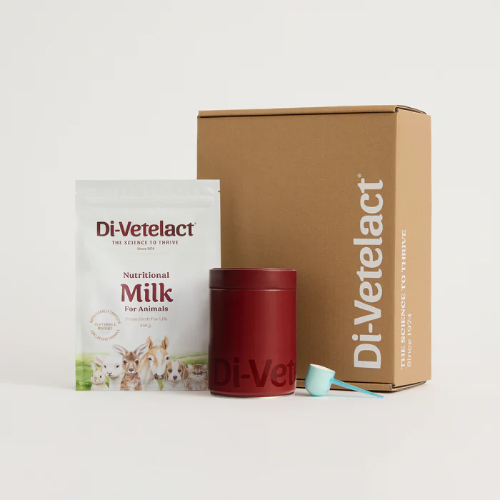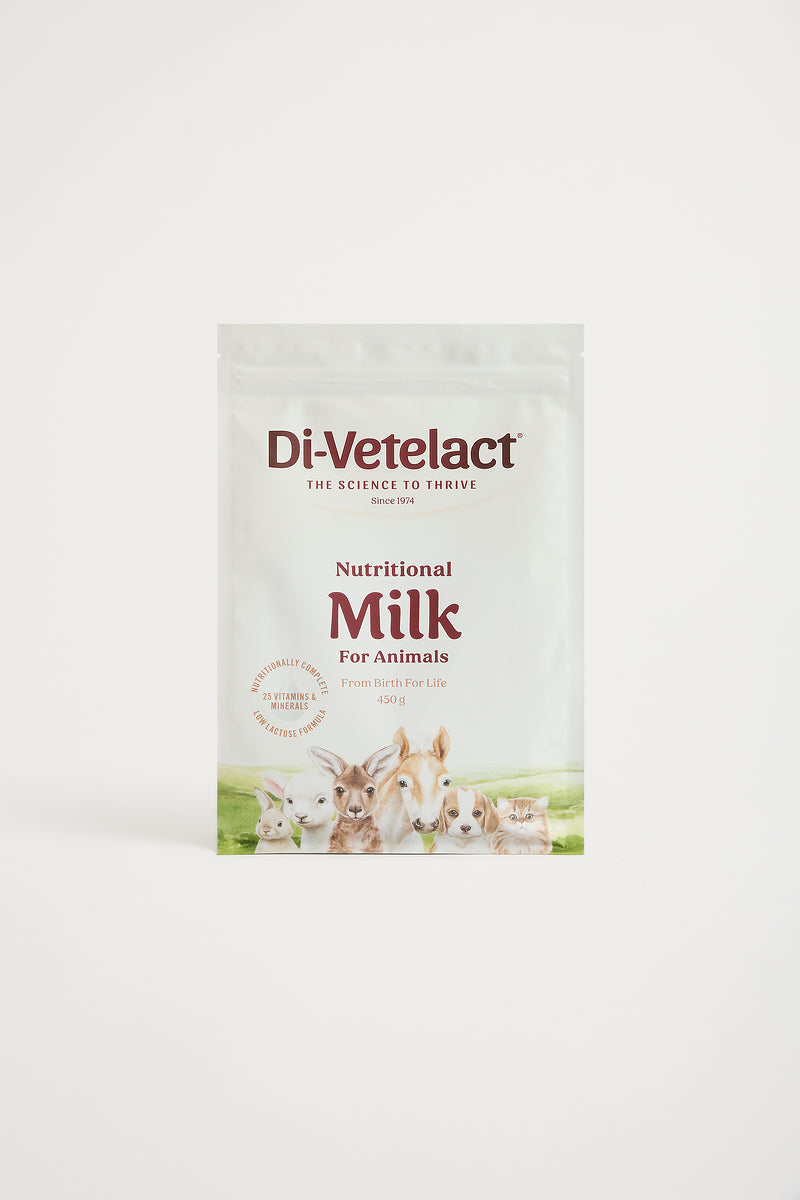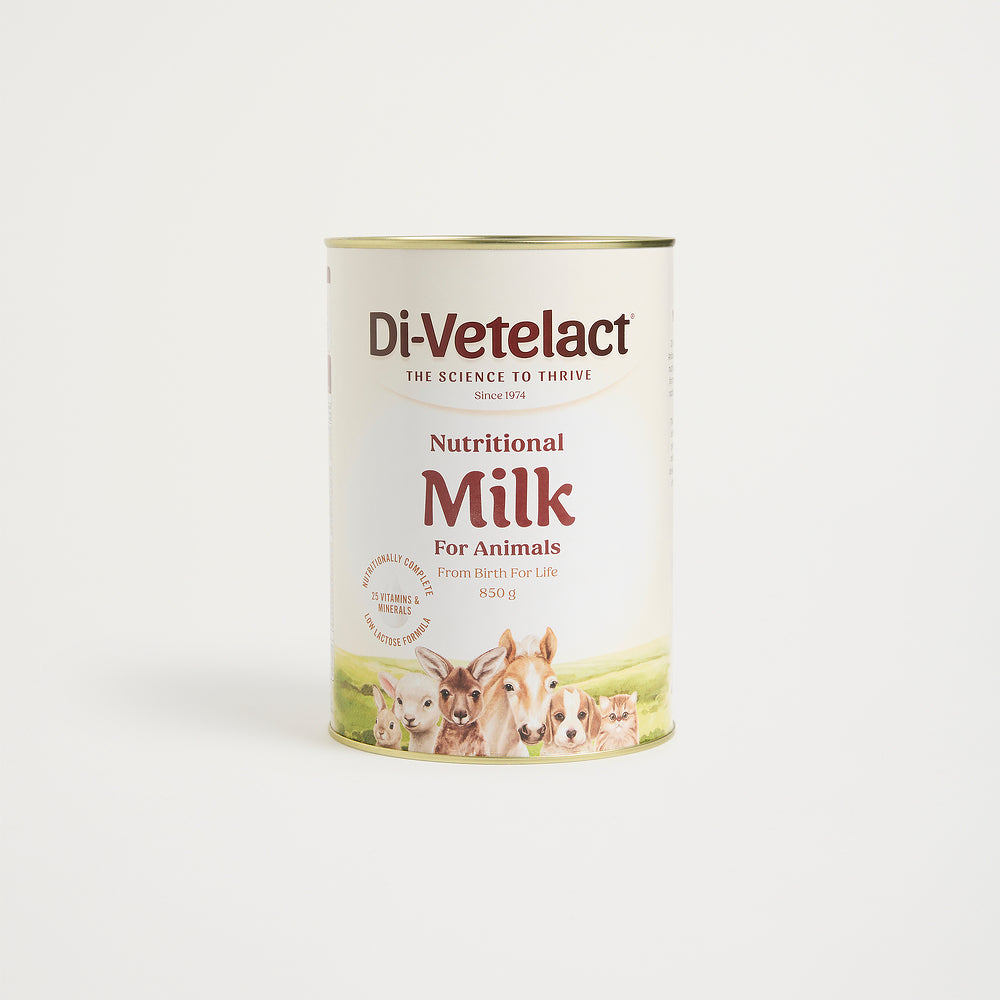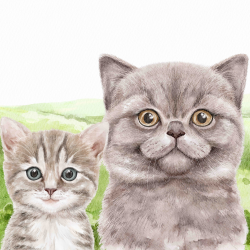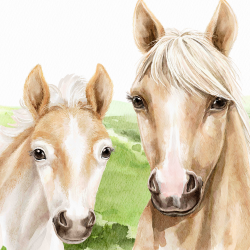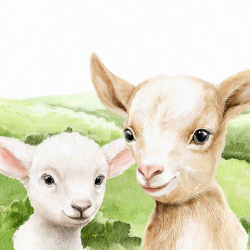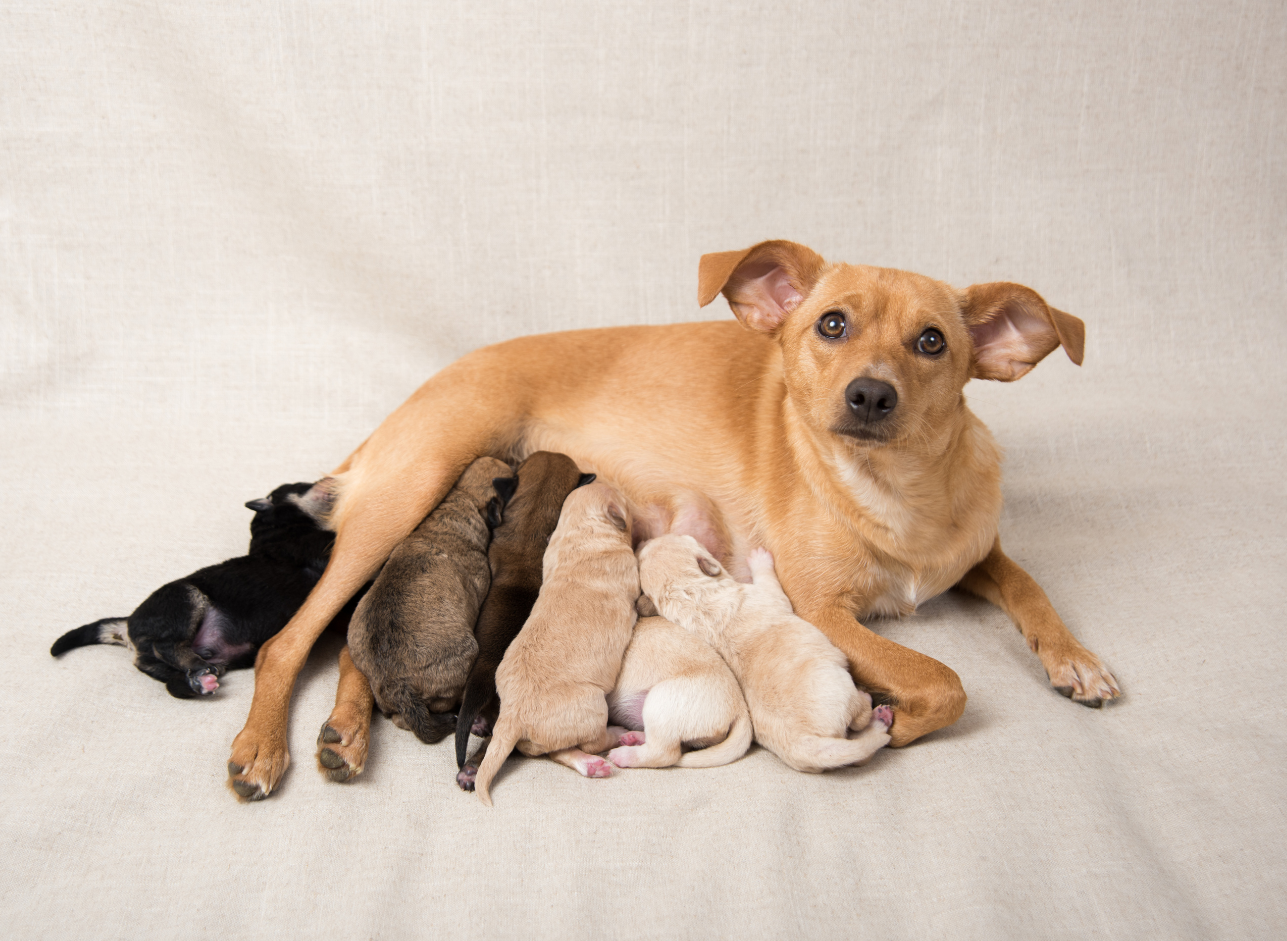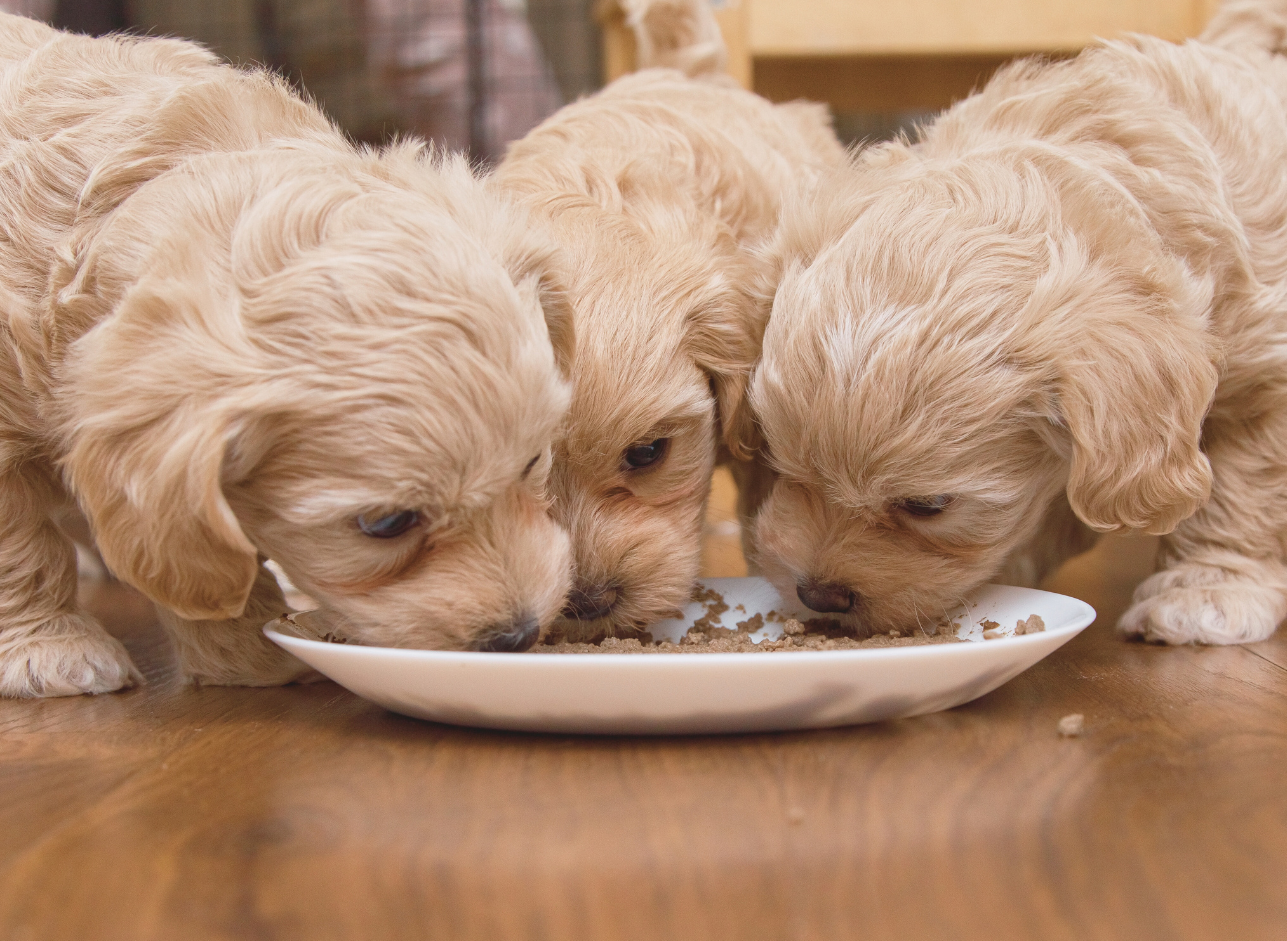Weaning is a critical developmental stage where a kitten transitions from a milk-based diet to solid foods. A structured and gradual weaning process is essential to support optimal growth, digestive health, and immune development. This guide outlines best practices for successful kitten weaning.
What is weaning?
Weaning describes the transition of the kitten’s diet from mother’s milk to the solid growth diet of kittens. If the kitten is orphaned or has required bottle feeding with a milk replacer such as Di-Vetelact Nutritional Milk, weaning is the process where the kitten moves from being fed 100% Di-Vetelact via bottle or tube, to taking food by themselves from a bowl. During this time the kittens will become more mobile and independent as they are no longer reliant on nursing.
What is the natural weaning process?
Without human intervention weaning begins naturally when the kittens are three to four weeks of age. The kittens will reduce the amount of time spent suckling and will be more mobile. The queen starts to spend more time out of the nest and the kittens will start showing interest in the queens’ solid food. The queen may sometimes hiss at the kittens and prevent them feeding from her by lying on her belly (preventing the kittens having access to the nipples). In the wild the queen may start bringing prey back to the kittens.
When does a kitten start weaning?
Weaning can start at approximately three to four weeks after birth. At this time, you will notice the kittens will gradually feed less and less from the mother. The kittens will have their baby canine and incisor teeth and are becoming more curious and playful. At the same time, the queen’s milk supply should be diminishing naturally and the frequency and quantity of food you are feeding her should also decrease. It is rare that medical intervention is required to reduce a mother’s milk supply.
If the kittens have been hand raised for any reason, it’s worthwhile to begin offering soft foods around 3-4 weeks of age. Allow the orphaned kitten time to transition from Di-Vetelact Nutritional Milk to 100% solids. Ensure the solids offered are nutrient dense premium commercial kitten foods, to prevent nutrient deficiency during the weaning process. During the early phases of weaning the kitten may still be offered a bottle of Di-Vetelact Nutritional Milk or be allowed to lap it from a bowl.
How do I start weaning a kitten?
The kitten will likely have their first experience of solids by accident as they step into their food and taste the food by grooming themselves.
The carer can also smear some of the softened food around the kitten’s mouth with their finger.
-
If you are weaning kittens directly from their mother:
- It can help to keep them separated from the queen for up to an hour around feeding times.
- Always be sure to have food, water, and a litter box available for both the queen and her kittens.
- Do not completely remove kittens from their mother too early, as this can lead to behavioural or socialisation issues later on. It’s important to recognise the role of the queen not just as a source of nutrition but also as a teacher of skills including play and use of a litter box.
-
For kittens that have been bottle fed:
- After about four weeks, human carers should very gradually begin to withdraw easy access to the bottle.
- This can be done by reducing the milk available by occasionally taking the bottle away before the kitten is full. At the same time, softened solid food is gradually introduced.
What type of food should be introduced to the kitten during the weaning process?
A nutritionally complete kitten food can be offered to the kitten – initially in canned form and later in dry form. Choosing a good veterinarian-recommended premium diet is essential for growth and development and ensures that your kitten receives balanced nutrition. With the support of Di-Vetelact Nutritional Milk, these premium foods are designed for rapidly growing weaning and weaned kittens.
These foods are also suitable for the queen during late gestation and lactation, due to their high energy and nutrient content. Around the time of weaning, kittens may often experiment with eating the queen’s solid food, so it’s ideal to provide the queen and the kittens the same complete kitten food.
Kittens can show interest in water as early as 4 weeks of age. Because milk replacers such as Di-Vetelact Nutritional milk and canned kitten food provide a fair amount of water, you may not see your kitten drink much until they have transitioned to dry kitten food.
Once kittens begin drinking water, always have fresh water available. Water should be offered in a small, shallow dish that’s no more than 5cm deep.
How can I prepare solid food for a weaning kitten?
1. Start with a gruel: The canned kitten food should be mixed with Di-Vetelact Nutritional Milk. These softened solid foods will be lapped by the kittens from a bowl.
2. Gradually decrease the liquid content: The amount of milk is then decreased daily until they are eating the kitten canned food with little, or no moisture added.
3. Once the kitten is tolerating the canned kitten food (usually after about one week) softened dry kitten food can be introduced – pre soak the kitten dry food with Di-Vetelact Nutritional Milk. As with the canned food, gradually decrease the liquid content until they are eating the kitten dry food with little, or no moisture added.
4. During the transition to canned or dry food, use only warm water or Di-Vetelact Nutritional milk to mix with the kitten food. Do not give the kitten cow's milk or other dairy products as these can contribute to tummy upsets.
When will my kitten be fully weaned?
Weaning is complete when the kitten is able to consume enough solid food to meet its needs (and it no longer needs to be moistened). This should be achieved by 6-9 weeks. Most domestic short hair kittens will be weaned by 6 weeks, whereas purebred kittens often complete weaning a little later, around 8-9 weeks.
Possible changes in bowel function during weaning
Moving to solid foods can sometimes cause changes in bowel function. Changes in the colour and consistency of a kitten’s faeces are expected during the weaning process. While on a milk-based diet, faeces are typically soft, pasty, and yellow-brown in colour. With the introduction of solids and as the kitten matures, it will become medium to dark brown in colour and be well formed in a log shape.
Around 4 weeks of age the kittens will start to defecate outside the nest box. The faeces will be easy to identify and check for any evidence of diarrhoea, which might occur during weaning. If diarrhoea persists longer than 24 hours or is severe, contact your vet. To reduce the chances of upset tummies during weaning, it’s best to gradually introduce feeding changes, ideally over a 4-day period.
The prebiotics found in Di-Vetelact Nutritional Milk can assist with maintaining a healthy gut during periods of stress experienced by the kitten during weaning. Some kitten foods also contain prebiotics which help support digestion and movement of food through the gut. This helps maintain a healthy microbiome, which is key to strengthening immunity, a healthy gut lining and optimum absorptive health of the gut.
How long do kittens need a special diet and how often do you have to feed them?
Kittens should continue to receive the same premium kitten food used for weaning until they are around 12 months of age.
A general guide on feed frequency:
- 4-8 weeks of age: At the time of weaning, they should be fed small amounts often, approximately four to six times a day.
- 6-8 weeks of age: By the time they are completely weaned from the mother, they should be receiving about four meals a day.
- 3 months of age: The quantity can be increased, and the frequency reduced to about three meals a day.
- 4 months of age: Most breeds then progress to two meals a day.
……….
Weaning is a key developmental stage for the kitten. With the right guidance and care, pet owners can confidently manage weaning at home and provide a smooth and stress free transition to solid foods for their kitten.

